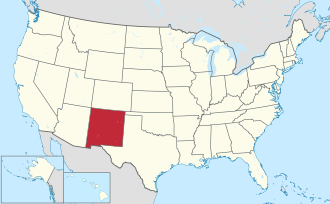2000 census
As of the 2000 census, [14] there were 62,298 people, 22,984 households, and 16,801 families living in the county. The population density was 9 people per square mile (3.5 people/km2). There were 29,272 housing units at an average density of 4 per square mile (1.5/km2). The racial makeup of the county was 71.73% White, 3.92% Black or African American, 5.80% Native American, 1.17% Asian, 0.13% Pacific Islander, 11.67% from other races, and 3.60% from two or more races. 32.16% of the population were Hispanic or Latino of any race.
There were 22,984 households, out of which 37.10% had children under the age of 18 living with them, 57.50% were married couples living together, 11.80% had a female householder with no husband present, and 26.90% were non-families. 23.30% of all households were made up of individuals, and 8.10% had someone living alone who was 65 years of age or older. The average household size was 2.66 and the average family size was 3.14.
In the county, the population was spread out, with 29.50% under the age of 18, 9.30% from 18 to 24, 28.60% from 25 to 44, 21.00% from 45 to 64, and 11.70% who were 65 years of age or older. The median age was 34 years. For every 100 females there were 99.00 males. For every 100 females age 18 and over, there were 96.80 males.
The median income for a household in the county was $30,861, and the median income for a family was $34,781. Males had a median income of $27,657 versus $18,470 for females. The per capita income for the county was $14,345. About 15.60% of families and 19.30% of the population were below the poverty line, including 27.90% of those under age 18 and 12.80% of those age 65 or over.
2010 census
As of the 2010 census, there were 63,797 people, 24,464 households, and 16,641 families living in the county. [15] The population density was 9.6 inhabitants per square mile (3.7/km2). There were 30,992 housing units at an average density of 4.7 per square mile (1.8/km2). [16] The racial makeup of the county was 70.7% white, 6.7% American Indian, 3.5% black or African American, 1.2% Asian, 0.2% Pacific islander, 11.5% from other races, and 4.2% from two or more races. Those of Hispanic or Latino origin made up 34.5% of the population. [15] In terms of ancestry, 13.4% were German, 8.1% were English, 8.0% were Irish, and 4.4% were American. [17]
Of the 24,464 households, 33.3% had children under the age of 18 living with them, 50.2% were married couples living together, 12.7% had a female householder with no husband present, 32.0% were non-families, and 27.1% of all households were made up of individuals. The average household size was 2.51 and the average family size was 3.05. The median age was 36.5 years. [15]
The median income for a household in the county was $39,615 and the median income for a family was $46,210. Males had a median income of $32,939 versus $25,965 for females. The per capita income for the county was $19,255. About 15.2% of families and 20.0% of the population were below the poverty line, including 28.0% of those under age 18 and 13.5% of those age 65 or over. [18]




